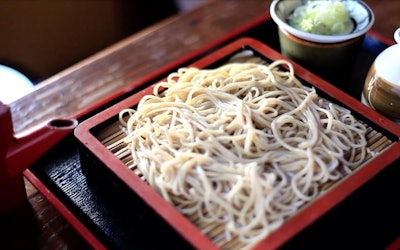A Close Look At the Master Craftsmanship of Japan's Temple & Shrine Carpenters! Discover the Amazing Traditional Japanese Technique of Building Without Using Nails
Art & Architecture
Traditional Culture
Japan's Temple & Shrine Carpenters
This video, titled "In Japan, Repairing Buildings Without a Single Nail," was uploaded by "Great Big Story."
It introduces a traditional Japanese temple and shrine carpenter, called "Miyadaiku" (宮大工) in Japanese, from Kamakura (鎌倉).
Japanese temple and shrine carpenters specialize in temples and shrines and construct/repair traditional buildings.
Some of the craftsmen work on the construction and repair of historical buildings, such as Japan's national treasures and world heritage sites.
Japan's temple and shrine carpenters must possess a high-level of skill and knowledge to repair traditional buildings.
A building repaired by Japan's Miyadaiku carpenters allows the beautiful architecture of Japan to remain the work of art that it is.
This article covers some of the amazing traditional techniques of Japan's temple and shrine carpenters and their journey to becoming full-fledged craftsmen.
Kigumi - A Traditional Carpentry Technique Used by Japan's Miyadaiku Carpenters
Photo:Kigumi, traditional Japanese architecture
Some wooden architecture in Japan, including temples and shrines, is built by assembling wooden materials together as though it were one large 3d puzzle.
This method is called the "Kigumi" method, meaning "wooden framework."
This impressive craftsmanship can be seen from 0:21 in the video.
The traditional skill of framing and jointing wood, characterized by very precise cutting and coupling of wood, requires countless hours of training and experience as a Miyadaiku carpenter.
Traditional Japanese architecture is made possible thanks to the high-quality craftsmanship of Japan's temple and shrine carpenters.
The Long Road to Becoming a Miyadaiku Carpenter
Photo:A wooden shrine, traditional Japanese architecture
Acquiring the skills of a Miyadaiku carpenter requires on-the-job training, so the first step is to become an apprentice at a workshop or construction firm and learn the repair processes and traditional methods used by observing the skills of a master Miyadaiku carpenter up close.
The history of Miyadaiku carpenters dates back more than a thousand years.
In the past, Japan's temple and shrine carpenters were referred to as "Wataridaiku," and they lived in areas with many shrines and temples, working from one location to the next.
Miyadaiku carpenters also repair historic World Heritage buildings and prominent national treasures, such as the one's you'd find in Kyoto.
Thus, Miyadaiku carpenters are required to have advanced knowledge in various fields, not just architecture, but religious studies as well.
Summary of Japan's Traditional Miyadaiku Carpenters
Photo:A wooden temple being built
Miya-Daiku carpenters have been repairing Japan's temples and shrines since ancient times with their advanced skills that can be used to construct wooden buildings without the use of nails.
This traditional Japanese culture is handed down from one generation of craftsmen to the next.
It's no secret that all of Japan's beautiful temples and shrines look like the amazing works of art they art thanks to the amazing craftsmanship of Japan's Miyadaiku carpenters.
 Video article 6:43
Video article 6:43 Video article 3:31
Video article 3:31